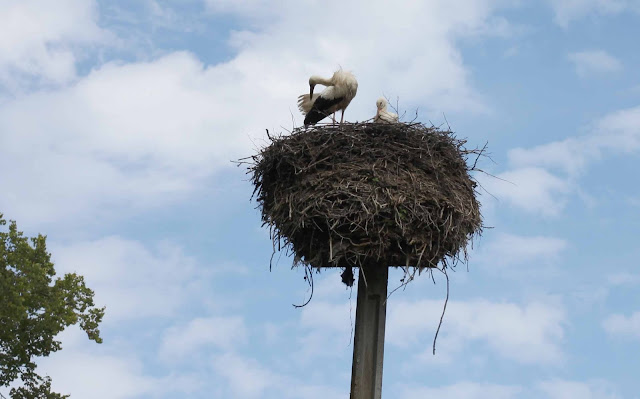The story of music from the gramophones to the modern ways to listen to the music - a nice exhibition at Hakasalmi villa
 |
In
Finland it’s easy for foreign visitors to visit museums. In many places the information
texts are in English and in Swedish besides in Finnish, for example in Helsinki
city Museum.
One
of the most charming venues for the Helsinki city museum venues is Hakasalmi villa in the heart of
the city where you can see the exhibition Music! Echoes from the past of
a city. The exhibition is open until the end of February 2017.
The exhibition provides glimpses of the
diversity of music in Helsinki before and now. You’ll get information about
school songs, instrument lessons, Christmas hymns, park concerts, walkmans or
band T-shirts.
You can test your taste in
music, feel the nerves of taking a common school singing test and learn a
minuet. Eurovision Song Contest and Hurriganes collectors have decorated their
own fan treasure cabinets.The items presented in the vitrines range from a square piano to a solid body guitar, from functionalism style radios to 70s music store plastic bags, from a Charleston dress to the graffiti-covered door of the Lepakko youth culture building.
Technological development made music independent of the live musician at the end of 19th century. Music boxes became more and more delicate and diverse. The gramophone replaced the music boxes at the end of 1920s. Cheap portable gramophones were available for many and the popular songs started to chime in the street canyons and on the beach.
The tube radio played opera. The small and light transistor radio brought music into kitchens, cars and workplaces in the 1950s. Vinyl records and record players took up place on the book shelf.
In the 1990th CDs brought a new dimension to music. At the 21st century came the tiny mp3 players, you could carry around a music library with you.
Music has been important in bars and restaurants. In the 1830s and 1984s the restaurants in Finland became stylish venues for celebration of bourgeois. Dining and dancing was accompanied by salon bands.
In the summer brass bands played on the stages of Kappeli restaurant and other park restaurants.
In the 1920s jazz came into fashion. In the 1950s and 1960s star singers came to the restaurants. In 1970s there was the disco fever. Later the restaurants started to play recorded music and many karaoke bars were created. Jazz and rock found their home in the clubs.
In Helsinki there are more than one hundred clubs and music baras nowadays.
The hall of the Hakasalmi Villa, once Aurora Karamzin’s salon, acts as a concert hall during the Music! exhibition. The address is Mannerheimintie 13 b.
 |
| Photos: Sirpa Pääkkönen |







Kommentit
Lähetä kommentti